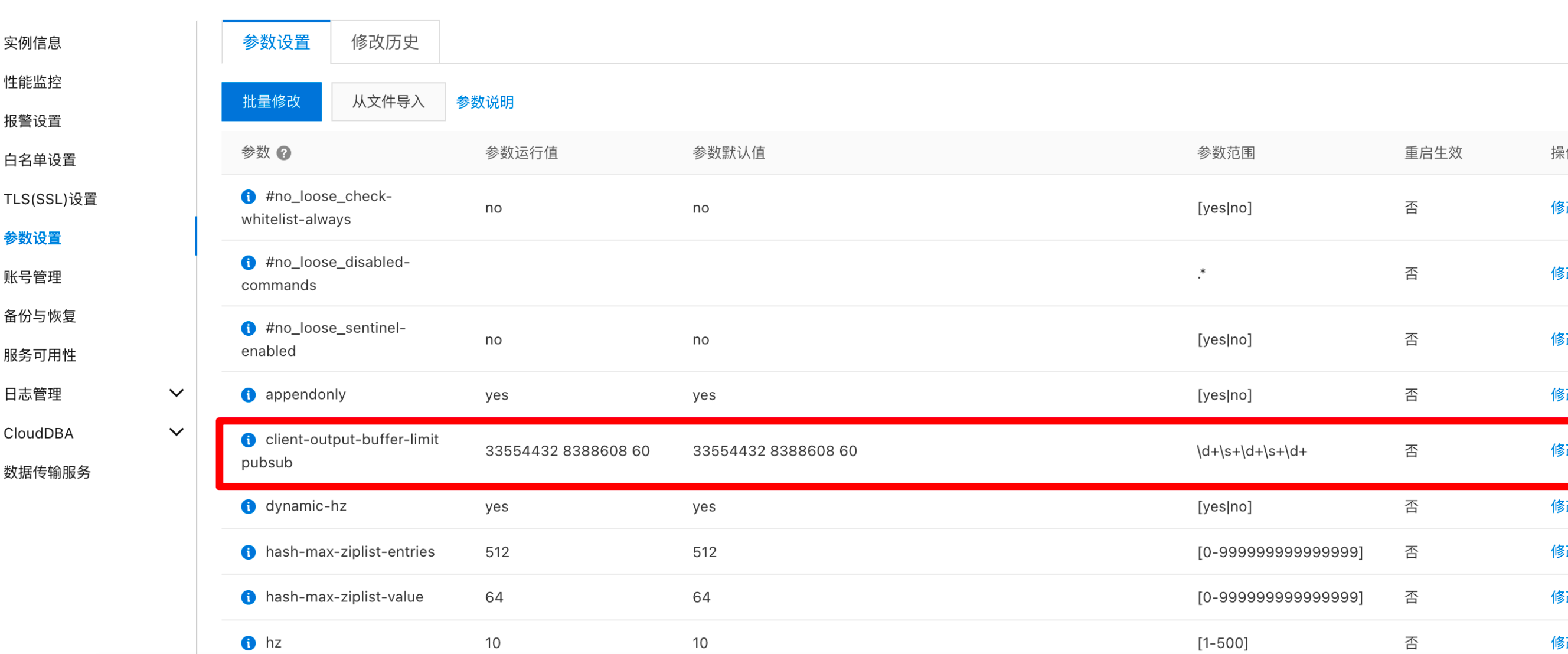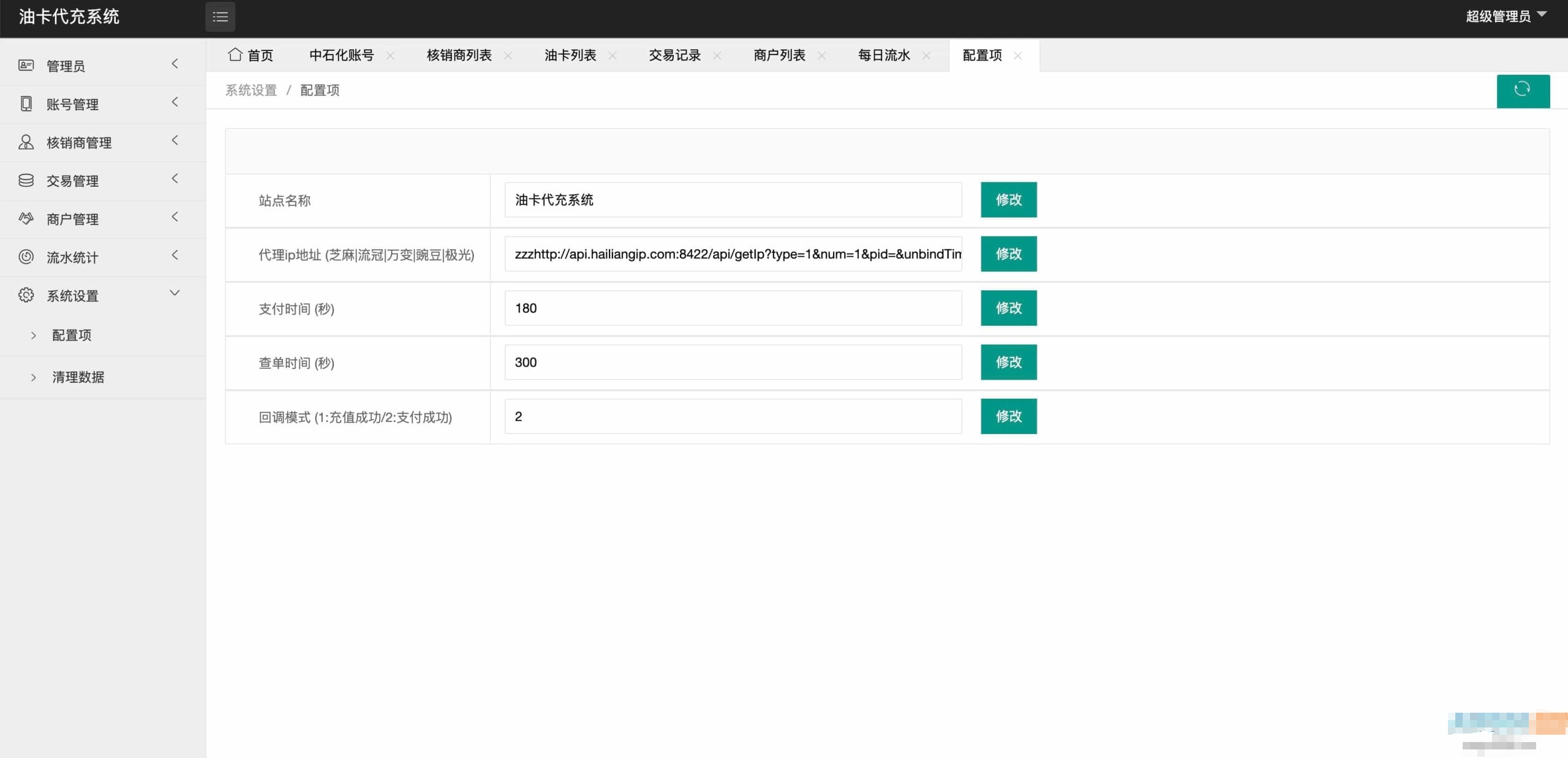1. 项目概述
本项目旨在开发一套先进的智能工厂设备监控系统,集成嵌入式技术、工业通信协议和人机界面等多项技术,实现对工厂设备的全方位实时监控、高精度数据采集和智能化分析。该系统将显著提升工厂设备的运行效率,大幅降低维护成本,并为管理层决策提供可靠的数据支持。
主要功能包括:
- 实时监控多种工业设备的运行状态
- 高精度采集和智能处理设备运行数据
- 通过标准工业协议与各类设备进行可靠通信
- 提供直观、友好的人机交互界面
- 智能异常检测、报警和处理机制
2. 系统设计
2.1 硬件设计

硬件系统主要包括以下组件:
- ARM Cortex-M4微控制器:选用STM32F407VGT6,主频168MHz,1MB Flash,192KB RAM,作为系统的核心处理单元。
- 16位ADC/DAC模块:利用STM32内置的12位ADC,外接16位ADC扩展芯片AD7606,实现高精度数据采集。
- 7寸电容触摸屏:分辨率800x480,提供清晰直观的人机交互界面。
- Modbus-RTU/Profibus-DP接口:集成MAX485芯片实现Modbus-RTU通信,使用Profibus-DP控制器芯片VPC3+C实现Profibus-DP通信。
- 传感器系统:包括PT100温度传感器、压力变送器和三轴加速度传感器,用于全面采集设备运行数据。
2.2 软件设计

软件系统主要包括以下模块:
-
数据采集模块:负责配置和控制ADC,实现高速数据采集,包括传感器数据的预处理和缓存。支持多通道并行采集,采样率可达1MSPS。
-
通信模块:实现Modbus-RTU和Profibus-DP协议,与各种工业设备进行数据交换。支持多设备并发通信,确保实时性和可靠性。
-
人机界面模块:基于Qt/C++开发,使用QML实现流畅的触摸屏交互和数据可视化。提供实时数据展示、历史趋势查询、报警管理等功能。
-
数据处理模块:实现数字滤波、FFT频谱分析、异常检测等算法。使用卡尔曼滤波器进行数据平滑,快速傅里叶变换进行频域分析,基于机器学习的异常检测算法实现设备故障预警。
-
系统管理模块:负责系统配置、用户权限管理、日志记录等功能。支持远程配置和固件升级。
-
数据存储模块:使用轻量级数据库SQLite存储历史数据和配置信息,支持数据导出和备份恢复。
-
网络通信模块:实现与上位机或云平台的数据交互,支持MQTT协议,实现远程监控和数据上报。
3. 代码实现
3.1 数据采集模块
// adc_driver.h
#ifndef ADC_DRIVER_H
#define ADC_DRIVER_H
#include <stdint.h>
#define ADC_CHANNELS 8
#define ADC_RESOLUTION 65536 // 16-bit ADC
typedef struct {
uint16_t raw_data[ADC_CHANNELS];
float voltage[ADC_CHANNELS];
} ADC_Data;
void ADC_Init(void);
void ADC_StartConversion(void);
ADC_Data ADC_GetData(void);
#endif
// adc_driver.c
#include "adc_driver.h"
#include "stm32f4xx_hal.h"
static ADC_HandleTypeDef hadc1;
static DMA_HandleTypeDef hdma_adc1;
static uint16_t adc_raw_buffer[ADC_CHANNELS];
void ADC_Init(void) {
// ADC GPIO配置
__HAL_RCC_GPIOA_CLK_ENABLE();
GPIO_InitTypeDef GPIO_InitStruct = {0};
GPIO_InitStruct.Pin = GPIO_PIN_0|GPIO_PIN_1|GPIO_PIN_2|GPIO_PIN_3
|GPIO_PIN_4|GPIO_PIN_5|GPIO_PIN_6|GPIO_PIN_7;
GPIO_InitStruct.Mode = GPIO_MODE_ANALOG;
GPIO_InitStruct.Pull = GPIO_NOPULL;
HAL_GPIO_Init(GPIOA, &GPIO_InitStruct);
// ADC1配置
hadc1.Instance = ADC1;
hadc1.Init.ClockPrescaler = ADC_CLOCK_SYNC_PCLK_DIV4;
hadc1.Init.Resolution = ADC_RESOLUTION_12B;
hadc1.Init.ScanConvMode = ENABLE;
hadc1.Init.ContinuousConvMode = ENABLE;
hadc1.Init.DiscontinuousConvMode = DISABLE;
hadc1.Init.NbrOfConversion = ADC_CHANNELS;
hadc1.Init.ExternalTrigConvEdge = ADC_EXTERNALTRIGCONVEDGE_NONE;
hadc1.Init.ExternalTrigConv = ADC_SOFTWARE_START;
hadc1.Init.DataAlign = ADC_DATAALIGN_RIGHT;
hadc1.Init.NbrOfDiscConversion = 0;
hadc1.Init.DMAContinuousRequests = ENABLE;
hadc1.Init.EOCSelection = ADC_EOC_SEQ_CONV;
HAL_ADC_Init(&hadc1);
// 配置ADC通道
ADC_ChannelConfTypeDef sConfig = {0};
for (int i = 0; i < ADC_CHANNELS; i++) {
sConfig.Channel = ADC_CHANNEL_0 + i;
sConfig.Rank = i + 1;
sConfig.SamplingTime = ADC_SAMPLETIME_480CYCLES;
HAL_ADC_ConfigChannel(&hadc1, &sConfig);
}
// 配置DMA
__HAL_RCC_DMA2_CLK_ENABLE();
hdma_adc1.Instance = DMA2_Stream0;
hdma_adc1.Init.Channel = DMA_CHANNEL_0;
hdma_adc1.Init.Direction = DMA_PERIPH_TO_MEMORY;
hdma_adc1.Init.PeriphInc = DMA_PINC_DISABLE;
hdma_adc1.Init.MemInc = DMA_MINC_ENABLE;
hdma_adc1.Init.PeriphDataAlignment = DMA_PDATAALIGN_HALFWORD;
hdma_adc1.Init.MemDataAlignment = DMA_MDATAALIGN_HALFWORD;
hdma_adc1.Init.Mode = DMA_CIRCULAR;
hdma_adc1.Init.Priority = DMA_PRIORITY_HIGH;
hdma_adc1.Init.FIFOMode = DMA_FIFOMODE_DISABLE;
HAL_DMA_Init(&hdma_adc1);
__HAL_LINKDMA(&hadc1, DMA_Handle, hdma_adc1);
}
void ADC_StartConversion(void) {
HAL_ADC_Start_DMA(&hadc1, (uint32_t*)adc_raw_buffer, ADC_CHANNELS);
}
ADC_Data ADC_GetData(void) {
ADC_Data data;
for (int i = 0; i < ADC_CHANNELS; i++) {
data.raw_data[i] = adc_raw_buffer[i];
data.voltage[i] = (float)adc_raw_buffer[i] * 3.3f / ADC_RESOLUTION;
}
return data;
}说明:
-
ADC_Init()函数初始化ADC和DMA。它配置GPIO引脚为模拟输入,设置ADC参数(如时钟、分辨率、扫描模式等),并配置DMA以自动传输ADC转换结果。 -
ADC_StartConversion()函数启动ADC转换,使用DMA模式连续采集数据。 -
ADC_GetData()函数返回最新的ADC数据,包括原始数字值和转换后的电压值。
3.2 通信模块
// modbus_rtu.h
#ifndef MODBUS_RTU_H
#define MODBUS_RTU_H
#include <stdint.h>
#define MAX_MODBUS_FRAME_SIZE 256
typedef struct {
uint8_t slave_address;
uint8_t function_code;
uint8_t data[MAX_MODBUS_FRAME_SIZE];
uint16_t data_length;
} ModbusFrame;
void Modbus_Init(void);
int Modbus_SendFrame(ModbusFrame *frame);
int Modbus_ReceiveFrame(ModbusFrame *frame);
#endif
// modbus_rtu.c
#include "modbus_rtu.h"
#include "stm32f4xx_hal.h"
static UART_HandleTypeDef huart2;
static uint8_t rx_buffer[MAX_MODBUS_FRAME_SIZE];
static uint16_t rx_index = 0;
void Modbus_Init(void) {
// UART2 初始化
huart2.Instance = USART2;
huart2.Init.BaudRate = 9600;
huart2.Init.WordLength = UART_WORDLENGTH_8B;
huart2.Init.StopBits = UART_STOPBITS_1;
huart2.Init.Parity = UART_PARITY_NONE;
huart2.Init.Mode = UART_MODE_TX_RX;
huart2.Init.HwFlowCtl = UART_HWCONTROL_NONE;
huart2.Init.OverSampling = UART_OVERSAMPLING_16;
HAL_UART_Init(&huart2);
// 启动接收中断
HAL_UART_Receive_IT(&huart2, rx_buffer, 1);
}
uint16_t Modbus_CRC16(uint8_t *buffer, uint16_t length) {
uint16_t crc = 0xFFFF;
for (uint16_t i = 0; i < length; i++) {
crc ^= buffer[i];
for (int j = 0; j < 8; j++) {
if (crc & 0x0001) {
crc = (crc >> 1) ^ 0xA001;
} else {
crc >>= 1;
}
}
}
return crc;
}
int Modbus_SendFrame(ModbusFrame *frame) {
uint8_t tx_buffer[MAX_MODBUS_FRAME_SIZE + 4];
uint16_t tx_length = 0;
tx_buffer[tx_length++] = frame->slave_address;
tx_buffer[tx_length++] = frame->function_code;
memcpy(&tx_buffer[tx_length], frame->data, frame->data_length);
tx_length += frame->data_length;
uint16_t crc = Modbus_CRC16(tx_buffer, tx_length);
tx_buffer[tx_length++] = crc & 0xFF;
tx_buffer[tx_length++] = (crc >> 8) & 0xFF;
return HAL_UART_Transmit(&huart2, tx_buffer, tx_length, 100);
}
int Modbus_ReceiveFrame(ModbusFrame *frame) {
if (rx_index < 4) {
return -1; // 帧不完整
}
uint16_t received_crc = (rx_buffer[rx_index - 1] << 8) | rx_buffer[rx_index - 2];
uint16_t calculated_crc = Modbus_CRC16(rx_buffer, rx_index - 2);
if (received_crc != calculated_crc) {
rx_index = 0;
return -2; // CRC错误
}
frame->slave_address = rx_buffer[0];
frame->function_code = rx_buffer[1];
frame->data_length = rx_index - 4;
memcpy(frame->data, &rx_buffer[2], frame->data_length);
rx_index = 0;
return 0; // 成功接收帧
}
void HAL_UART_RxCpltCallback(UART_HandleTypeDef *huart) {
if (huart->Instance == USART2) {
if (rx_index < MAX_MODBUS_FRAME_SIZE) {
rx_index++;
HAL_UART_Receive_IT(&huart2, &rx_buffer[rx_index], 1);
} else {
rx_index = 0; // 缓冲区溢出,重置接收
}
}
}说明:
-
Modbus_Init()函数初始化UART2用于Modbus-RTU通信,并启动接收中断。 -
Modbus_CRC16()函数计算Modbus帧的CRC校验码。 -
Modbus_SendFrame()函数发送Modbus帧,包括添加CRC校验码。 -
Modbus_ReceiveFrame()函数处理接收到的Modbus帧,验证CRC校验码并解析帧内容。 -
HAL_UART_RxCpltCallback()函数是UART接收中断回调,用于连续接收Modbus帧数据。
3.3 人机界面模块
由于人机界面模块使用Qt/QML开发,这里提供一个简化的QML示例:
// MainScreen.qml
import QtQuick 2.12
import QtQuick.Controls 2.12
import QtCharts 2.3
Rectangle {
width: 800
height: 480
ChartView {
id: temperatureChart
title: "温度趋势"
anchors.left: parent.left
anchors.top: parent.top
width: parent.width / 2
height: parent.height / 2
LineSeries {
name: "温度"
// 数据点将通过C++后端更新
}
}
ChartView {
id: pressureChart
title: "压力趋势"
anchors.right: parent.right
anchors.top: parent.top
width: parent.width / 2
height: parent.height / 2
LineSeries {
name: "压力"
// 数据点将通过C++后端更新
}
}
ListView {
id: alarmList
anchors.left: parent.left
anchors.bottom: parent.bottom
width: parent.width
height: parent.height / 2
model: AlarmModel {} // 假设有一个C++实现的AlarmModel
delegate: Text {
text: model.timestamp + ": " + model.message
color: model.severity === "High" ? "red" : "yellow"
}
}
}
说明:
- 这个QML文件定义了一个简单的用户界面,包含两个图表(用于显示温度和压力趋势)和一个报警列表。
- 实际应用中,数据会通过C++后端与QML前端进行交互,动态更新图表和报警列表。
3.4 数据处理模块
// data_processing.h
#ifndef DATA_PROCESSING_H
#define DATA_PROCESSING_H
#include <vector>
#include <complex>
class DataProcessing {
public:
static std::vector<float> applyKalmanFilter(const std::vector<float>& input, float processNoise, float measurementNoise);
static std::vector<std::complex<float>> performFFT(const std::vector<float>& input);
static bool detectAnomaly(const std::vector<float>& data, float threshold);
private:
static void fft(std::vector<std::complex<float>>& x);
};
#endif
// data_processing.cpp
#include "data_processing.h"
#include <cmath>
std::vector<float> DataProcessing::applyKalmanFilter(const std::vector<float>& input, float processNoise, float measurementNoise) {
std::vector<float> filtered(input.size());
float estimate = input[0];
float errorEstimate = 1.0f;
for (size_t i = 0; i < input.size(); ++i) {
// 预测步骤
float predictedEstimate = estimate;
float predictedErrorEstimate = errorEstimate + processNoise;
// 更新步骤
float kalmanGain = predictedErrorEstimate / (predictedErrorEstimate + measurementNoise);
estimate = predictedEstimate + kalmanGain * (input[i] - predictedEstimate);
errorEstimate = (1 - kalmanGain) * predictedErrorEstimate;
filtered[i] = estimate;
}
return filtered;
}
std::vector<std::complex<float>> DataProcessing::performFFT(const std::vector<float>& input) {
size_t n = input.size();
std::vector<std::complex<float>> data(n);
for (size_t i = 0; i < n; ++i) {
data[i] = std::complex<float>(input[i], 0);
}
fft(data);
return data;
}
void DataProcessing::fft(std::vector<std::complex<float>>& x) {
size_t n = x.size();
if (n <= 1) return;
std::vector<std::complex<float>> even(n/2), odd(n/2);
for (size_t i = 0; i < n/2; ++i) {
even[i] = x[2*i];
odd[i] = x[2*i+1];
}
fft(even);
fft(odd);
for (size_t k = 0; k < n/2; ++k) {
std::complex<float> t = std::polar(1.0f, -2 * M_PI * k / n) * odd[k];
x[k] = even[k] + t;
x[k+n/2] = even[k] - t;
}
}
bool DataProcessing::detectAnomaly(const std::vector<float>& data, float threshold) {
float mean = 0.0f;
for (float value : data) {
mean += value;
}
mean /= data.size();
float variance = 0.0f;
for (float value : data) {
variance += (value - mean) * (value - mean);
}
variance /= data.size();
float stdDev = std::sqrt(variance);
for (float value : data) {
if (std::abs(value - mean) > threshold * stdDev) {
return true; // 检测到异常
}
}
return false; // 未检测到异常
}说明:
-
applyKalmanFilter()函数实现了一维卡尔曼滤波器,用于平滑传感器数据。它接受原始数据、过程噪声和测量噪声作为输入,返回滤波后的数据。卡尔曼滤波器通过预测和更新两个步骤,有效地减少了数据中的噪声。 -
performFFT()函数实现了快速傅里叶变换(FFT),用于将时域信号转换为频域。这对于分析设备振动等周期性信号非常有用。该函数使用了递归的 Cooley-Tukey FFT 算法。 -
fft()是一个私有辅助函数,实现了实际的 FFT 算法。它使用分治法递归地计算 FFT。 -
detectAnomaly()函数实现了一个简单的异常检测算法。它计算数据的均值和标准差,然后检查是否有数据点偏离均值超过指定的阈值(以标准差为单位)。如果发现异常数据点,函数返回 true。
这个数据处理模块提供了基本的信号处理和异常检测功能。在实际应用中,您可能需要根据具体需求进行调整和扩展。例如,可以添加更复杂的异常检测算法,如基于机器学习的方法,或者实现更多的信号处理功能,如数字滤波器等。
3.5 系统管理模块
// system_manager.h
#ifndef SYSTEM_MANAGER_H
#define SYSTEM_MANAGER_H
#include <string>
#include <vector>
class SystemManager {
public:
static bool initialize();
static bool loadConfiguration(const std::string& configFile);
static bool saveConfiguration(const std::string& configFile);
static bool updateFirmware(const std::string& firmwareFile);
static void logEvent(const std::string& event);
static std::vector<std::string> getLogEntries(int count);
private:
static std::vector<std::string> logEntries;
};
#endif
// system_manager.cpp
#include "system_manager.h"
#include <fstream>
#include <ctime>
std::vector<std::string> SystemManager::logEntries;
bool SystemManager::initialize() {
// 初始化系统组件
// ...
logEvent("System initialized");
return true;
}
bool SystemManager::loadConfiguration(const std::string& configFile) {
std::ifstream file(configFile);
if (!file.is_open()) {
logEvent("Failed to load configuration: " + configFile);
return false;
}
// 读取和解析配置文件
// ...
logEvent("Configuration loaded: " + configFile);
return true;
}
bool SystemManager::saveConfiguration(const std::string& configFile) {
std::ofstream file(configFile);
if (!file.is_open()) {
logEvent("Failed to save configuration: " + configFile);
return false;
}
// 保存配置到文件
// ...
logEvent("Configuration saved: " + configFile);
return true;
}
bool SystemManager::updateFirmware(const std::string& firmwareFile) {
// 实现固件更新逻辑
// ...
logEvent("Firmware updated: " + firmwareFile);
return true;
}
void SystemManager::logEvent(const std::string& event) {
time_t now = time(0);
char* dt = ctime(&now);
std::string timestamp(dt);
timestamp.pop_back(); // 移除换行符
std::string logEntry = timestamp + " - " + event;
logEntries.push_back(logEntry);
// 如果日志条目过多,删除旧条目
if (logEntries.size() > 1000) {
logEntries.erase(logEntries.begin());
}
// 在实际应用中,可能还需要将日志写入文件或数据库
}
std::vector<std::string> SystemManager::getLogEntries(int count) {
if (count <= 0 || count > logEntries.size()) {
return logEntries;
}
return std::vector<std::string>(logEntries.end() - count, logEntries.end());
}说明:
-
initialize()函数用于初始化系统组件,可以在这里添加各个模块的初始化代码。 -
loadConfiguration()和saveConfiguration()函数分别用于加载和保存系统配置。在实际应用中,您需要实现配置文件的解析和生成逻辑。 -
updateFirmware()函数用于更新系统固件。在实际应用中,您需要实现固件验证、写入和重启等逻辑。 -
logEvent()函数用于记录系统事件。它将事件信息与时间戳一起存储在内存中,并限制了最大日志条目数量。 -
getLogEntries()函数允许获取最近的日志条目,方便查看系统状态和故障诊断。
3.6 数据存储模块
为了实现数据的持久化存储,我们使用SQLite数据库。以下是一个简化的数据存储模块实现:
// data_storage.h
#ifndef DATA_STORAGE_H
#define DATA_STORAGE_H
#include <string>
#include <vector>
#include <sqlite3.h>
struct SensorData {
int64_t timestamp;
int sensor_id;
float value;
};
class DataStorage {
public:
DataStorage();
~DataStorage();
bool initialize(const std::string& dbFile);
bool storeSensorData(const SensorData& data);
std::vector<SensorData> retrieveSensorData(int sensor_id, int64_t start_time, int64_t end_time);
bool backupDatabase(const std::string& backupFile);
private:
sqlite3* db;
};
#endif
// data_storage.cpp
#include "data_storage.h"
#include <iostream>
DataStorage::DataStorage() : db(nullptr) {}
DataStorage::~DataStorage() {
if (db) {
sqlite3_close(db);
}
}
bool DataStorage::initialize(const std::string& dbFile) {
int rc = sqlite3_open(dbFile.c_str(), &db);
if (rc) {
std::cerr << "Can't open database: " << sqlite3_errmsg(db) << std::endl;
return false;
}
const char* sql = "CREATE TABLE IF NOT EXISTS sensor_data ("
"timestamp INTEGER NOT NULL,"
"sensor_id INTEGER NOT NULL,"
"value REAL NOT NULL);";
char* errMsg = nullptr;
rc = sqlite3_exec(db, sql, nullptr, nullptr, &errMsg);
if (rc != SQLITE_OK) {
std::cerr << "SQL error: " << errMsg << std::endl;
sqlite3_free(errMsg);
return false;
}
return true;
}
bool DataStorage::storeSensorData(const SensorData& data) {
const char* sql = "INSERT INTO sensor_data (timestamp, sensor_id, value) VALUES (?, ?, ?);";
sqlite3_stmt* stmt;
int rc = sqlite3_prepare_v2(db, sql, -1, &stmt, nullptr);
if (rc != SQLITE_OK) {
std::cerr << "Failed to prepare statement: " << sqlite3_errmsg(db) << std::endl;
return false;
}
sqlite3_bind_int64(stmt, 1, data.timestamp);
sqlite3_bind_int(stmt, 2, data.sensor_id);
sqlite3_bind_double(stmt, 3, data.value);
rc = sqlite3_step(stmt);
if (rc != SQLITE_DONE) {
std::cerr << "Failed to insert data: " << sqlite3_errmsg(db) << std::endl;
sqlite3_finalize(stmt);
return false;
}
sqlite3_finalize(stmt);
return true;
}
std::vector<SensorData> DataStorage::retrieveSensorData(int sensor_id, int64_t start_time, int64_t end_time) {
std::vector<SensorData> result;
const char* sql = "SELECT timestamp, sensor_id, value FROM sensor_data "
"WHERE sensor_id = ? AND timestamp BETWEEN ? AND ? "
"ORDER BY timestamp;";
sqlite3_stmt* stmt;
int rc = sqlite3_prepare_v2(db, sql, -1, &stmt, nullptr);
if (rc != SQLITE_OK) {
std::cerr << "Failed to prepare statement: " << sqlite3_errmsg(db) << std::endl;
return result;
}
sqlite3_bind_int(stmt, 1, sensor_id);
sqlite3_bind_int64(stmt, 2, start_time);
sqlite3_bind_int64(stmt, 3, end_time);
while ((rc = sqlite3_step(stmt)) == SQLITE_ROW) {
SensorData data;
data.timestamp = sqlite3_column_int64(stmt, 0);
data.sensor_id = sqlite3_column_int(stmt, 1);
data.value = sqlite3_column_double(stmt, 2);
result.push_back(data);
}
if (rc != SQLITE_DONE) {
std::cerr << "Error retrieving data: " << sqlite3_errmsg(db) << std::endl;
}
sqlite3_finalize(stmt);
return result;
}
bool DataStorage::backupDatabase(const std::string& backupFile) {
sqlite3* pBackupDB;
int rc = sqlite3_open(backupFile.c_str(), &pBackupDB);
if (rc != SQLITE_OK) {
std::cerr << "Cannot open backup database: " << sqlite3_errmsg(pBackupDB) << std::endl;
sqlite3_close(pBackupDB);
return false;
}
sqlite3_backup* pBackup = sqlite3_backup_init(pBackupDB, "main", db, "main");
if (pBackup) {
sqlite3_backup_step(pBackup, -1);
sqlite3_backup_finish(pBackup);
}
rc = sqlite3_errcode(pBackupDB);
sqlite3_close(pBackupDB);
return rc == SQLITE_OK;
}说明:
-
retrieveSensorData()函数从数据库中检索指定时间范围内特定传感器的数据。它同样使用预处理语句,并返回一个包含查询结果的向量。 -
backupDatabase()函数创建数据库的备份副本。它使用SQLite的内置备份API来确保数据的一致性。
这个数据存储模块提供了基本的数据持久化功能,包括数据的存储、检索和备份。在实际应用中,您可能需要根据具体需求进行优化和扩展,例如:
- 添加索引以提高查询性能
- 实现数据压缩或归档功能以节省存储空间
- 添加数据完整性检查和错误恢复机制
- 实现数据加密以提高安全性
3.7 网络通信模块
为了实现与上位机或云平台的数据交互,我们可以使用MQTT协议。以下是一个简化的网络通信模块实现,使用Paho MQTT C++客户端库:
// mqtt_client.h
#ifndef MQTT_CLIENT_H
#define MQTT_CLIENT_H
#include <string>
#include <mqtt/async_client.h>
class MqttClient {
public:
MqttClient(const std::string& serverAddress, const std::string& clientId);
~MqttClient();
bool connect();
bool disconnect();
bool publish(const std::string& topic, const std::string& payload);
bool subscribe(const std::string& topic);
private:
mqtt::async_client client;
mqtt::connect_options connOpts;
};
#endif
// mqtt_client.cpp
#include "mqtt_client.h"
#include <iostream>
MqttClient::MqttClient(const std::string& serverAddress, const std::string& clientId)
: client(serverAddress, clientId) {
connOpts.set_keep_alive_interval(20);
connOpts.set_clean_session(true);
}
MqttClient::~MqttClient() {
disconnect();
}
bool MqttClient::connect() {
try {
mqtt::token_ptr conntok = client.connect(connOpts);
conntok->wait();
return true;
}
catch (const mqtt::exception& exc) {
std::cerr << "Error: " << exc.what() << std::endl;
return false;
}
}
bool MqttClient::disconnect() {
try {
client.disconnect()->wait();
return true;
}
catch (const mqtt::exception& exc) {
std::cerr << "Error: " << exc.what() << std::endl;
return false;
}
}
bool MqttClient::publish(const std::string& topic, const std::string& payload) {
try {
client.publish(topic, payload, 1, false)->wait();
return true;
}
catch (const mqtt::exception& exc) {
std::cerr << "Error: " << exc.what() << std::endl;
return false;
}
}
bool MqttClient::subscribe(const std::string& topic) {
try {
client.subscribe(topic, 1)->wait();
return true;
}
catch (const mqtt::exception& exc) {
std::cerr << "Error: " << exc.what() << std::endl;
return false;
}
}这个网络通信模块提供了基本的MQTT客户端功能,包括连接、断开、发布和订阅。在实际应用中,您需要根据具体需求进行扩展,例如:
- 实现消息回调处理
- 添加重连机制
- 实现 QoS 级别的控制
- 添加 SSL/TLS 支持以增强安全性
- 实现消息持久化,以处理网络中断情况
- 添加消息过滤和优先级处理
4. 项目总结
本智能工厂设备监控系统项目整合了多种先进技术,包括嵌入式系统、工业通信协议、数据采集与处理、人机界面设计、数据存储和网络通信等。通过这些模块的协同工作,系统能够实现对工厂设备的全面监控、数据分析和远程管理。
主要特点和优势:
- 高性能数据采集:利用 ARM Cortex-M4 微控制器和高精度 ADC,实现快速、准确的数据采集。
- 可靠的工业通信:支持 Modbus-RTU 和 Profibus-DP 协议,确保与各种工业设备的兼容性。
- 智能数据处理:应用卡尔曼滤波、FFT 分析和异常检测算法,提供深入的数据洞察。
- 直观的人机界面:基于 Qt/QML 的触摸屏界面,提供友好的用户体验。
- 灵活的数据存储:使用 SQLite 数据库,支持本地数据存储和查询。
- 远程监控能力:通过 MQTT 协议实现与云平台的数据交互,支持远程监控和控制。
5. 参考文献
- ARM. (2021). Cortex-M4 Processor. Cortex-M4
- Modbus Organization. (2021). Modbus Application Protocol Specification V1.1b3. http://www.modbus.org/docs/Modbus_Application_Protocol_V1_1b3.pdf
- The Qt Company. (2021). Qt Documentation. Qt Documentation | Home
- SQLite. (2021). SQLite Documentation. SQLite Documentation
- Eclipse Foundation. (2021). Paho MQTT C++ Client Library. Eclipse Paho | The Eclipse Foundation










![[Labview] 表格单元格外边框 二维图片叠加绘图](https://i-blog.csdnimg.cn/direct/3f4988738b834db283fc0477af026883.png)








